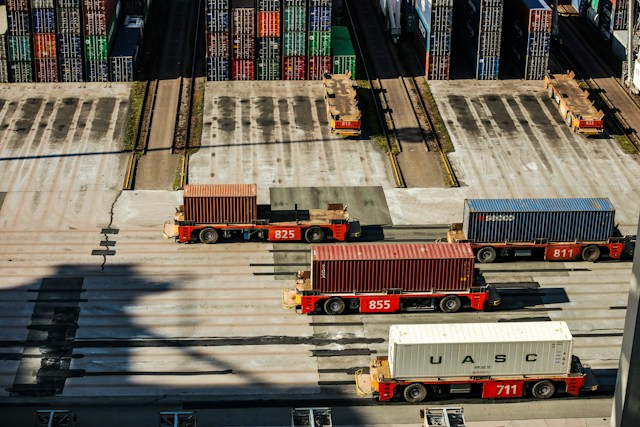Welcome, readers! Today’s discussion takes us on an exciting voyage into the future of maritime logistics. Get ready to dive into the innovations transforming the shipping industry, specifically the progress in autonomous shipping technology. Let’s explore how ships are becoming increasingly independent, and how these advances are revolutionizing maritime logistics.
Autonomous marine vessels: The game-changers of the maritime industry
Autonomous vessels, also known as unmanned surface vehicles (USVs), have been making waves in the maritime industry. These self-navigating behemoths use cutting-edge technology to significantly reduce or even eliminate the need for a human crew on board. How does that work, you may ask? The answer is by integrating intelligent systems and sensors to collect and analyze data in real-time. This enables the vessel to make decisions on its own, from plotting the course to detecting obstacles and even performing complex maneuvers.
A lire en complément : What advances are being made in biometric payment systems?
By eliminating the need for a large crew, companies can significantly reduce costs associated with crewing, such as salaries and living conditions. Also, repurposing these spaces can lead to greater overall vessel efficiency, fundamentally changing the way ships are designed and used.
The adoption of autonomous shipping technology has been rapidly accelerating over the past few years. Major players in the shipping industry are investing in research and development, with some already conducting successful trials of autonomous vessels.
A voir aussi : Chatbots in recruitment: optimize the candidate selection process
Efficiency: The winning card of autonomous shipping
The benefits of autonomous shipping extend beyond cost savings alone. Operational efficiency is another major advantage. Autonomous vessels use advanced systems and algorithms to determine the most efficient route, taking into account factors such as wind, waves, and current. This not only saves time but also significantly reduces the amount of fuel required, making these ships more environmentally friendly.
To give you an idea, picture a self-driving car. Now imagine it on a much larger scale — that’s what we’re dealing with when we talk about an autonomous ship. By entrusting the navigation to an intelligent system, the possibility of human error is considerably reduced. This increases the safety and reliability of the shipping process, which is crucial in an industry responsible for more than 80% of the world’s trade by volume.
Implementing high-tech systems for increased safety
Safety is a top priority in the shipping industry, and autonomous technology is providing exciting new ways to enhance it. Autonomous ships incorporate a vast array of sensors and systems designed to constantly monitor the vessel’s status and the surrounding environment. By using real-time data and predictive analytics, these systems can anticipate potential problems before they occur, allowing for proactive measures to be taken.
Another key safety feature of autonomous ships is the ability to operate in dangerous or difficult conditions, such as extreme weather or in high-risk areas, without endangering a human crew. This is of particular significance in industries like offshore drilling, where worker safety is a major concern.
The Human Element in Autonomous Shipping
Even as technology advances, the human element will never be entirely eliminated from maritime logistics. While autonomous vessels will handle the majority of operations, humans will still be necessary to oversee these systems and make high-level decisions.
The advent of autonomous shipping is expected to lead to a shift in the types of jobs available in the industry. There will be less need for traditional seafaring roles, and more demand for highly skilled positions related to the design, implementation, operation, and maintenance of autonomous systems. This will lead to the creation of jobs that are safer, more comfortable, and offer better work-life balance than traditional seafaring roles.
The Future of Autonomous Shipping
As we journey into the future, it’s clear that autonomous shipping will play a significant role in the maritime industry. The benefits it presents in terms of cost savings, efficiency, safety, and environmental impact make it an attractive choice for shipping companies.
However, like any emerging technology, autonomous shipping faces challenges. These include regulatory issues, technical difficulties, and concerns about cyber-security. But with the pace of technological advancement, it’s just a matter of time before these challenges are overcome.
The future of maritime logistics is here, and it’s autonomous. Get ready for a sea change like no other in the world of shipping. With autonomous shipping, the possibilities are as vast as the ocean itself.
Regulatory Challenges and Cybersecurity Concerns in Autonomous Shipping
Embarking on the journey of autonomous shipping, the industry is increasingly aware of the regulatory challenges and cybersecurity concerns that come with it. Shipping companies and authorities are working hand in hand to develop regulations and standards that ensure the safe and secure operation of these vessels.
One of the significant regulatory challenges lies in determining liability in case of accidents. Traditional maritime law is based on the assumption that a human crew is responsible for a ship’s operations. With autonomous vessels, this assumption no longer holds. Therefore, regulatory framework needs to be developed to deal with issues related to the liability of software developers, manufacturers, and operators of autonomous systems.
Concerning cybersecurity, autonomous vessels are particularly vulnerable due to their reliance on software and data. The potential impact of a cyber-attack on an autonomous ship could be devastating. It could lead to loss of cargo, environmental damage, or even loss of life. As such, shipping companies need to invest significantly in cybersecurity measures to protect their vessels and cargo.
While these challenges are daunting, they are not insurmountable. As the technology advances, so too will the solutions to these problems. The maritime industry is prepared to face these challenges head-on and will continue to work relentlessly to ensure that autonomous shipping becomes a reality.
Conclusion: Sailing into the Future of Maritime Logistics
In conclusion, the autonomous shipping revolution is well underway, promising to re-define maritime logistics as we know it. Despite facing significant challenges, the potential benefits of autonomous ships in terms of cost savings, increased efficiency, improved safety, and reduced environmental impact make it an irresistible trend for the shipping industry.
With the relentless march of technology, we are set to see the day when autonomous vessels dominate the seas. This will not only revolutionize the shipping industry but also create new opportunities in terms of jobs and economic growth.
However, it’s important to remember that while we aim for a future dominated by autonomous ships, we must also address the challenges and risks that come with it. The shipping industry, regulators, and technology providers must work together to ensure that the transition to autonomous shipping is safe, secure, and beneficial for all.
As maritime logistics stands on the brink of a new era, it’s clear that the future of shipping is autonomous. And as we sail into this future, it’s crucial to remember that this journey is not just about technological innovation. It’s about creating a safer, more efficient, and more sustainable shipping industry for generations to come. The future is here, and it’s time to embrace it.











